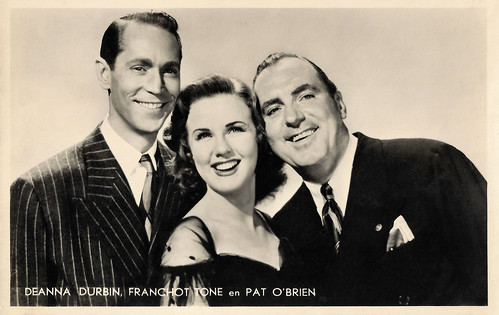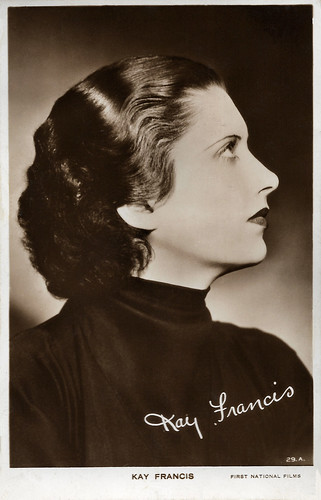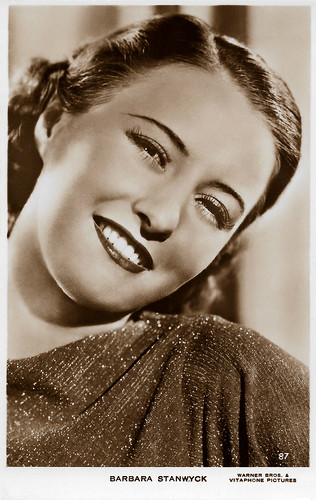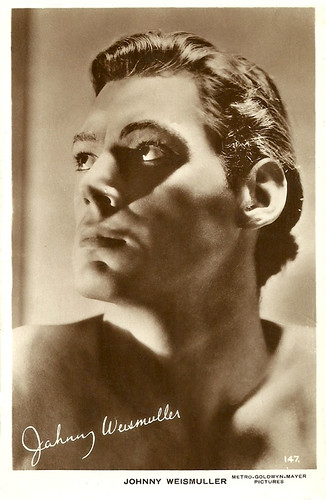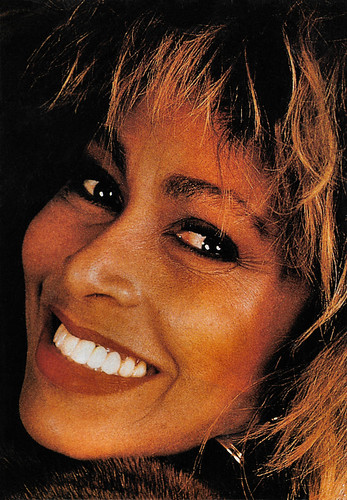
Dutch postcard by S. & v. H., A. Photo: M.P.E.A.
Donna Reed (1921-1986) was an American film and television actress and producer. Her career spanned more than 40 years, with performances in more than 40 films. She is well known for her role as Mary Hatch Bailey in It's a Wonderful Life (Frank Capra, 1946). She received the Oscar for Best Supporting Actress for her role as Lorene Burke in the war drama From Here to Eternity (Fred Zinnemann, 1953). Reed is also known as Donna Stone, a middle-class American mother and housewife in the sitcom The Donna Reed Show (1958–1966).

Dutch postcard by S. & v. H., A. Photo: M.P.E.A. Sonja Henie and Michael O'Shea in It's a Pleasure (William A. Seiter, 1945).
Petite and glamorous Sonja Henie (1912-1969) was one of the greatest figure skaters in history, the ‘Pavlova of the ice’. She won more Olympic and World titles than any other ladies' figure skater. At the height of her acting career, the Norwegian figure skater and film star was one of the highest-paid stars in Hollywood. She had a shrewd business sense and was immensely successful next with a series of ice revues.

Dutch postcard by S. & v. H., A. Photo: M.P.E.A.
American actress Joan Fontaine (1917-2013) was the younger sister of Hollywood star Olivia de Havilland, but Joan made a name for herself with two classics by Alfred Hitchcock, Rebecca (1941) and Suspicion (1942). For the first film, she was nominated for the Oscar, and for the second film, she won the award.

Dutch postcard by J.S.A. Photo: M.G.M. / M.P.E.
American film star Joan Crawford (1904-1977) had a career that spanned many decades, studios, and controversies. In her silent films, she made an impact as a vivacious Jazz Age flapper, and later she matured into a star of psychological melodramas.

Dutch postcard/ Photo: MPEA / Warner Bros.
American actress Joan Leslie (1925-2015) starred in over 30 films. Her breakout role came at the age of 15, when she appeared as the crippled girl Velma in High Sierra (1941) with Humphrey Bogart. In the following years, she starred alongside Gary Cooper in Sergeant York (1941) and James Cagney in Yankee Doodle Dandy (1942). After 1956, she appeared in several television series.

Dutch postcard by S. & v. H., A. Photo: M.P.E.A. Gary Cooper and Loretta Young in Along Came Jones (Stuart Heisler, 1945).
American screen legend Gary Cooper (1901-1961) is well remembered for his stoic, understated acting style in more than one hundred Westerns, comedies and dramas. He received five Oscar nominations and won twice for his roles as Alvin York in Sergeant York (1941) and as Will Kane in High Noon (1952).
Loretta Young (1913-2000) was probably one of the loveliest female stars from the golden age of Hollywood, with her beautiful eyes, high cheekbones, full lips and radiant smile. She was also regarded as one of the most elegant actresses of her time. Young had a long career at the top. She began to get leading roles at the end of the 1920s and was still given starring parts at the beginning of the 1950s. Afterwards, she was able to extend her success for several years by wisely turning to television.

Dutch postcard by DRC, no. 31. Photo: MPEA.
American actress Marguerite Chapman (1918-1999) began her career as a model. In 1940, she moved to Hollywood and appeared in film and television till 1977.

Dutch postcard by S. & v. H., A. Photo: M.P.E.A. James Stewart and Donna Reed in It's a Wonderful Life (Frank Capra, 1946).
American actor James Stewart (1908-1997) is among the most honoured and popular stars in film history. Known for his distinctive drawl and everyman screen persona, Stewart had a film career that spanned over 55 years and 80 films.

Dutch postcard by MPEA. Photo: Metro Goldwyn Mayer.
Judy Garland (1922-1969) was an American singer, actress, and vaudevillian. During a career that spanned 45 of her 47 years, Garland attained international stardom as an actress in musical and dramatic roles, as a recording artist, and on the concert stage. She was nominated for the Oscar for Best Actress for A Star is Born (1954) and received a nomination for Best Supporting Actress for Judgment at Nuremberg (1961).

Dutch postcard by Takken, no. 3132. Photo: Paramount Pictures.
American actress Betty Hutton (1921-2007) was an energetic, 'blonde bombshell' of the 1940s. She appeared in successful musicals and comedies, including The Miracle of Morgan's Creek (1943), Red, Hot and Blue (1949), Annie Get Your Gun (1950), and The Greatest Show on Earth (1952).

Dutch postcard by S. & v. H., A. Photo: M.P.E.A. Sonja Henie and Michael O'Shea in It's a Pleasure (William A. Seiter, 1945).
Michael O'Shea (1906-1973) was an American actor who appeared on the stage, in feature films, and on television in a career that spanned the 1940s and early 1970s. He was also a comedian, musician, and band leader, and performed on the radio.

Dutch postcard by Takken, no. 3180 Photo: Europa-Columbia.
Glamorous Adele Jergens (1917-2002) was an American film actress of the 1940s and 1950s who was often cast in B-films as blonde floozies and burlesque dancers.

Dutch postcard by J.S.A. Photo: W.B. & V.P. / M.P.E.
Japanese-born British-American actress Olivia de Havilland (1916-2020) had a career from 1935 to 1988. She appeared in 49 feature films and was one of the leading stars during the golden age of Classical Hollywood. She is best known for her early screen performances in The Adventures of Robin Hood (1938) and Gone with the Wind (1939), and her later award-winning performances in To Each His Own (1946), The Snake Pit (1948), and The Heiress (1949).

Dutch postcard by P.F. Cladder, Amsterdam, no. 49-47. Photo: 20th Century Fox.
Famous composer Irving Berlin would allegedly have said once, "I’d rather have Alice Faye introduce my songs than anyone else". Henry King, who directed her in three films, stated: "Alice Faye always took direction beautifully without any show of temperament, and when you were done, the character she played came across with a vibrant warmth of personality so many actresses did not possess. I think that was the secret of Alice’s success in pictures. A deep-seated human warmth, so genuine, so real that everybody felt it. It’s truly a gift; you can’t buy it. It’s either there or it isn’t." In the second half of the 1930s and the first half of the 1940s, Alice Faye was a name to reckon with in the world of Hollywood musicals. Her compelling voice, her remarkable ability to put over a song and her endearing screen persona made her a top star. In the U.S. Quigley’s Motion Picture Exhibitors’ Poll, which was the barometer of the stars’ box-office power, she placed 9th in 1938, 7th in 1939, 13th in 1940, 12th in 1941 and 1943 and 15th in 1944 (in 1942, she had been away from the screen).

Dutch postcard by Korès. Photo: Paramount.
American singer Bing Crosby (1903-1977) was a crooner whose signature song was 'White Christmas'. He often played 'happy-go-lucky fellas' in films which included the 'Road to...' comedies from 1940 to 1962, but he proved that he could act with The Country Girl (1954) opposite Grace Kelly. Crosby was a multi-media entertainer: a star on the radio and in the cinema, with chart-topping recordings. He had 38 no. 1 singles, which surpassed Elvis Presley and The Beatles.
All postcards: Collection Geoffrey Donaldson Institute. To be continued tomorrow.



